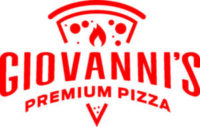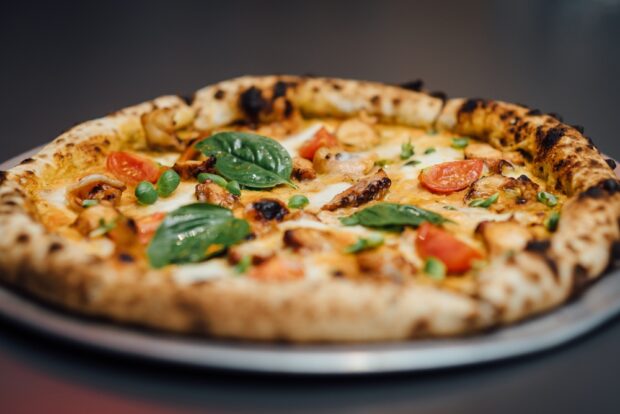When it comes to making the perfect pizza at home, there’s one feature that separates the amateurs from the experts – the crust. A good pizza crust is more than just a base for all your toppings; it should have a satisfying crunch and a bit of char for added flavor and texture. Achieving that perfect charred crust, especially when cooking frozen pizza, can elevate the whole experience. Many pizza enthusiasts aim for that crispy, slightly burnt edge that gives the crust a depth of flavor, without overcooking the rest of the pizza. Fortunately, with the right techniques and tools, it’s not too difficult to achieve this at home, even when working with frozen pizza. Here’s how you can make your crust a little charred and impress your friends or family with your pizza-making prowess.
The Importance of Charred Crust
Before diving into the methods of achieving that crispy, charred perfection, it’s important to understand why the charred crust is so desirable. The slight charring adds an appealing contrast to the soft interior of the dough, giving the pizza an exciting blend of textures. The char itself imparts a smoky flavor that heightens the overall taste of the pizza. This flavor is similar to what you might experience when cooking a pizza in a wood-fired oven, which is the holy grail of pizza-making. While most home ovens can’t replicate that authentic wood-fired atmosphere, you can still create a beautifully charred crust with the right adjustments.
Frozen pizzas, in particular, can sometimes be a little too soft or doughy on the edges if not cooked correctly. While the toppings are often satisfying, a soggy crust can detract from the overall enjoyment. This is where a little char can make a big difference. By learning how to manipulate the heat and cooking process, you can achieve a perfectly charred crust while still enjoying the convenience of frozen pizza.
Using The Right Cooking Method
The key to achieving that perfect char on your pizza crust starts with using the right cooking method. While there are many ways to cook a pizza at home, some methods are better suited for creating a crispy, charred edge.
One of the best ways to get a charred crust on your frozen pizza is by using a pizza stone. A pizza stone is great because it mimics the cooking surface of a traditional pizza oven by absorbing heat and distributing it evenly across the crust. The stone also helps to draw moisture away from the dough, ensuring a crispy base. To use a pizza stone, place it in the oven before preheating it, allowing it to get as hot as possible. For frozen pizza, you want to preheat the oven to a higher temperature, around 475°F to 500°F, which will help achieve the charred effect.
If you don’t have a pizza stone, don’t worry. You can still get great results by using a baking sheet or directly placing the pizza on the oven rack. A baking sheet is a convenient option and will still provide a crispy crust, but it may not create the same intense char that a pizza stone does. For the best char, it’s best to place the pizza directly on the oven rack for the last few minutes of baking. This allows the heat to circulate around the pizza more directly, especially the crust, promoting a more even char.
The Role of High Heat
To make your crust a little charred, you’ll need to cook your pizza at a higher temperature than you might think. While most frozen pizzas recommend baking at around 375°F, for a more charred crust, you’ll need to increase the temperature to between 450°F and 500°F. The higher heat allows the crust to cook faster, giving it the crispy texture and char that you’re looking for.
When cooking frozen pizza, you’ll want to keep a close eye on it, as the cooking time will be shorter than the instructions suggest. The goal is not to burn the pizza, but to create a perfect balance between a golden crust and a slightly blackened edge. If you notice that the top of your pizza is cooking faster than the crust, you can place the pizza on the lower rack of the oven to allow the bottom to cook more evenly. Similarly, if you see that the crust is getting too dark before the rest of the pizza is fully cooked, you can cover the top of the pizza with aluminum foil to slow down the cooking process on top while still allowing the crust to crisp up.
Another important aspect of high heat is ensuring that your oven is preheated properly. Don’t skip the preheating step, as this allows the heat to fully distribute throughout the oven and ensures that your pizza cooks evenly. Additionally, making sure your oven’s temperature is accurate is important. Some ovens can run hot or cold, which can affect how your pizza bakes. An oven thermometer can help you ensure that you’re cooking at the correct temperature.
Adjusting Cooking Time for a Charred Crust
Frozen pizza often comes with a set cooking time on the box, but these times are designed to give you a well-cooked pizza, not necessarily a perfectly charred crust. To get the charred effect, you’ll need to adjust the cooking time slightly. It’s important to keep in mind that the goal is to achieve a crispy, slightly blackened crust without overcooking the rest of the pizza.
Start by cooking the pizza according to the package instructions but check on it about 5 minutes before the recommended cooking time is up. This gives you the opportunity to monitor the crust and ensure it’s not getting too dark. At this point, you can increase the temperature slightly or move the pizza closer to the top of the oven to promote additional charring on the crust. If your pizza is close to done but the crust isn’t quite as charred as you’d like, leave it in the oven for an additional 2-3 minutes and keep a watchful eye on it.
One important note is that the type of pizza you’re cooking can affect the cooking time. Thin-crust frozen pizzas tend to cook faster and may char more easily, so be sure to check them frequently. Thick-crust frozen pizzas or those with lots of toppings may take a bit longer to cook through, so you’ll need to balance between getting the crust charred and making sure the pizza is fully heated.
The Finishing Touches
Once your pizza is out of the oven, you might want to add a few finishing touches to enhance the charred crust even further. Some people enjoy brushing the edges of their pizza crust with a little olive oil or melted butter to give it an extra sheen and flavor. You can even sprinkle some garlic powder, Parmesan cheese, or herbs like oregano or basil on the crust for added taste.
If you’ve achieved the perfect char on your pizza but find the crust a little too tough, don’t worry. Letting the pizza rest for a few minutes before cutting it can help to soften the crust slightly, making it easier to cut and eat. This resting time also allows the toppings to settle and ensures that the pizza is not too hot when you dig in.
Another trick is to slice your pizza with a pizza cutter or sharp knife, making sure to cut through the charred crust carefully. The crispy edge can be quite firm, but with the right technique, you can still enjoy every bite.
Conclusion
Making your crust a little charred is all about using the right techniques, high heat, and the right amount of time in the oven. Whether you’re cooking a frozen pizza or a homemade one, adjusting your baking method can lead to a crust with just the right balance of crispiness and flavor. By using a pizza stone, cranking up the oven temperature, and monitoring your pizza carefully as it cooks, you can achieve that satisfying charred crust that enhances the pizza experience.

